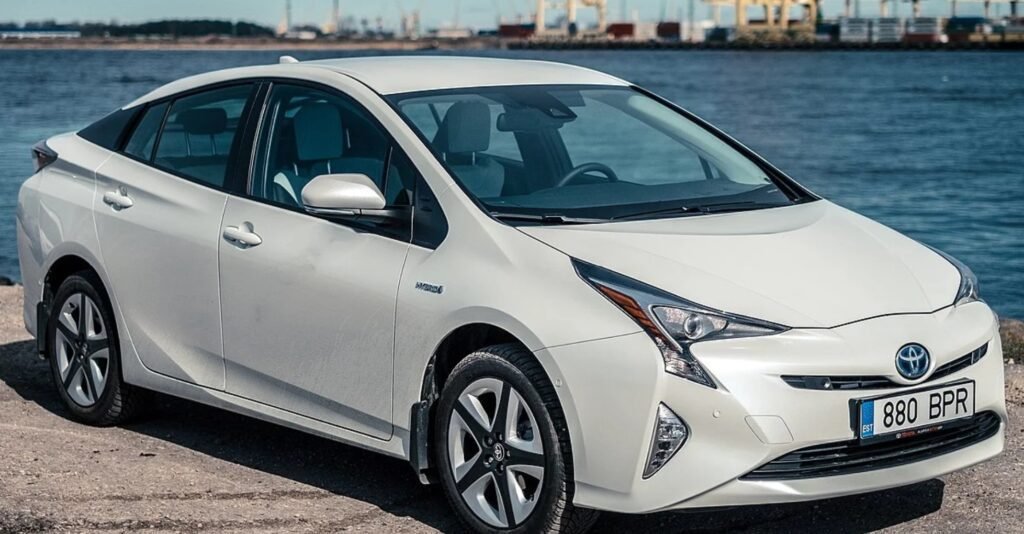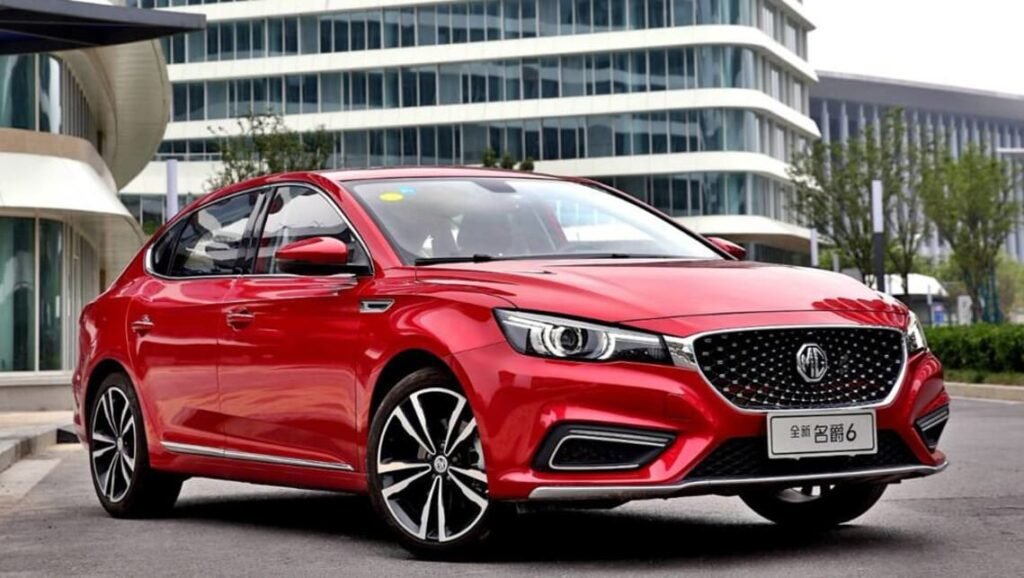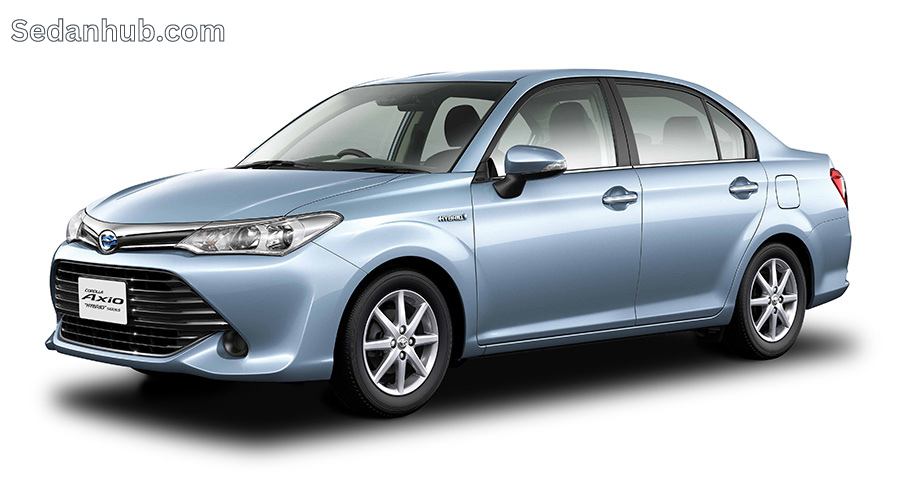Toyota Prius (/pris/), also known as the Toyota Puriusu (Japanese, Hepburn: Toyota Puriusu), is a Toyota compact/small family liftback (supermini/subcompact car till 2003). Using both an internal combustion engine and an electric motor, the Prius has a hybrid drivetrain. After being available as a four-door sedan at first, it has only been manufactured as a five-door liftback since 2003.
As the first hybrid automobile to go into mass production. The “car for the twenty-first century” is the Toyota Prius. It was first offered for sale in Japan in 1997. At all four Toyota Japan dealership chains before being made available internationally in 2000.
Terms and derivation
Prius is a Latin word that means “first,” “original,” “superior,” or “to come before.”
Toyota USA requested the American public to choose between Prien, Prii, Prium, and Prius. Or Prius in order to determine the most appropriate plural version of the word “Prius” in February 2011. The corporation announced that “Prii” was the most popular choice and the newly accepted plural noun in the US on February 20.
The comparative form of an adjective in Latin, prior, previous, and Prius only has comparative and superlative forms. The superlative is primus, prima, and primum. Like all other neuter nouns, “neuter” has a Latin plural, “priora,” but in 2007, the Lada Priora went by that name. Despite Toyota USA’s usage of the “official” plural,
First generation (XW10; 1997)
NHW10 (1997–2000)
At the Tokyo Motor Show in 1995, Toyota presented a hybrid concept car. Testing followed a year later. The initial Prius, model NHW10, went on sale on December 10, 1997. Only Japan sold the first-generation Prius (NHW10).
The first-generation Prius was the first gasoline-electric hybrid vehicle during its widespread production. Upon its initial release in 1997, it won the Car of the Year Japan Award the following year. It won the Car of the Year prize at the Japanese Automotive Researchers’ and Journalists’ Conference.
NHW11 (2000–2003)
The first Prius produced by Toyota and offered for sale outside of Japan was the NHW11 model, also referred to as “Generation II.” Limited sales started in Asia, America, Europe, and Australia in the year 2000. The Prius was positioned between the Corolla and Camry in the US market with a published selling price of US$19,995 (which will be $34,000 in 2022). Sales in Europe started in September 2000. The Prius made its debut in Australia at the Sydney Motor Show in October 2001. Sales didn’t start to increase, though, until the NHW20 (XW20) model became available. Toyota sold roughly 123,000 of the original Priuses.
Second generation (XW20; 2003)
The 2004 US model year Prius had its world debut at the New York International Auto Show in April 2003 after receiving a complete makeover. By redistributing mechanical and interior space. It was made into a tiny liftback with significantly greater baggage and rear-seat legroom, being around the size of the Corolla and the Camry. The second-generation Prius is 6 inches (150 mm) longer and, according to the EPA, is more environmentally friendly than the previous model. Its more aerodynamic Kammback body balances length and wind resistance with a drag coefficient of Cd=0.26. Shigeyuki Hori, the chief engineer, oversaw the development process, which resulted in 530 patents for the vehicle. Production at the Tsutsumi facility in Toyota, Aichi, began in August 2003. Added in October 2004 was the Fujitsu facility in Kariya, Aichi.
Third generation (XW30; 2009)
Toyota debuted the updated Prius (2010 US model year) at the North American International Auto Show in January 2009, and on May 18, 2009, sales in Japan began. Some people have questioned if increasing Prius sales will result in decreased sales of other vehicles with higher margins. This is because Toyota reduced the price of the Prius from 2.331 million to 2.05 million to better compete with the Honda Insight. Toyota had trouble leveraging the popularity of the Prius due to competition from less expensive hybrids like the Honda Insight. Toyota had sold over 1,688,000 third-generation Priuses as of June 2013 across the globe.
Fourth generation (XW50; 2015)
The fourth-generation Prius was first unveiled in September 2015 in Las Vegas. And went on sale to the general public on December 9 in Japan. The debut took place in January 2016 in the North American market and in February in Europe and the Middle East.
The Prius line’s main engineer, Toyota Managing Officer Satoshi Ogiso, revealed some of the upgrades and essential characteristics of the following generation Prius in August 2013. This model of the Prius is the first to use the Toyota New Global Architecture (TNGA) modular chassis. Which provides a lower center of gravity and increased structural strength. According to Ogiso, the Prius Prime, a plug-in hybrid of a later generation, was developed at the same time as the first Prius car.
Fifth generation (XW60; 2022)
The fifth-generation Prius will go on sale in Japan on November 16, 2022, with two powertrain options. The first employs Toyota’s Series Parallel Hybrid System, which comes in 1.8- and 2.0-liter (2ZR-FXE) variations and has a maximum output of 103 kW (138 horsepower; 140 PS) and 193 or 196 horsepower; 196 or 199 PS, or 144 or 146 kW, respectively. This model is also available with the E-Four all-wheel drive system. The second vehicle is a plug-in hybrid that harnesses the power of a 2.0-liter M20A-FXS engine, an electric motor, and lithium-ion batteries to generate 164 kW (220 horsepower; 223 PS) as a combined output.
Prius family
Prius Plug-in Hybrid
The Prius Plug-in Hybrid (ZVW35) is based on the traditional third generation (ZVW30) and has a 4.4 kWh lithium-ion battery that provides an 18 km (11 mi) all-electric range. A worldwide demonstration effort that began in late 2009 and took place in Japan, Europe, Canada, China, Australia, New Zealand, and the United States using 600 pre-production test cars.
Prius Prime
The Toyota Prius Prime in the US and Prius PHV in Japan are the names of the second-generation plug-in hybrid Prius vehicles. Which were developed concurrently with the conventional XW50 variant of the fourth-generation Prius and went on sale in December 2015. In November 2016, the model became available to American retail purchasers. In February 2017 Japan followed. The Prius Prime, as opposed to the first-generation model, will be offered in all 50 states in the American market. The combined global sales of the two Prius plug-in variants hit 79,300 cars at the end of January 2017. With 46,133 units sold since launch until January 2017, the U.S., 3,788 of which were second-generation Prius Prime automobiles, has the greatest sales volume.
Prius v
Toyota introduced the Prius (alpha) in Japan in May 2011. It comes in two versions: a five-seat, two-row model, and a seven-seat, three-row model, with the latter’s third row made possible by a compact lithium-ion drive battery in the center console. The five-seat model makes use of a NiMH battery pack. The five-seat Prius V, which debuted in North America in October 2011 and included two rows of seats and a nickel-metal hydride battery pack comparable to the Prius from the 2010 model year, is based on the Alpha. Models produced in Europe and Japan come fitted with a lithium-ion battery and three rows of seats.
Prius c
At the North American International Auto Show in January 2011, Toyota introduced the Prius C concept. The Prius C is smaller and has a lower list price than the Prius liftback. Following its unveiling at the 2011 Tokyo Motor Show, the Toyota Aqua made its premiere in Japan in December of that same year. The Prius C went on sale in the US, Canada, and Australia in March 2012, and in New Zealand and Australia in April 2012. In place of the Prius C, Toyota has been offering the Toyota Yaris Hybrid throughout Europe since June 2012. The Yaris Hybrid and the Prius C have the same powerplant.
Design and technology

The Prius is an example of a power-split or series-parallel (complete) hybrid, often known as a mixed hybrid, which is a car that can run on either gasoline or electricity or both. The drag coefficient (Cd) of a Kammback design is 0.25 (0.29 for the 2000 model), which reduces wind resistance. Using tires with less rolling resistance reduces the amount of friction on the road.
EV mode
In the second-generation Prius sold in North America, electric pumps warm the internal combustion engine by pumping previously heated engine coolant from a coolant thermos. A few seconds pass between turning the automobile on and the internal combustion engine firing up. The coolant thermos is absent from the third-generation Prius.
Batteries

There are two batteries: a 12-volt battery known as the low voltage (LV) battery and a high voltage (HV) battery pack. Frequently referred to as the traction battery. The Panasonic EV Energy Co. of Japan provided the traction battery for the first generation Prius update (from 2000 onwards), which had a sealed 38-module nickel metal hydride (NiMH) battery pack with a capacity of 1.78 kWh at a voltage of 273.6 V and weight 53.3 kg (118 lb). Each Prius electric motor contains 1 kg (2 lb) of neodymium and each battery pack uses 10-15 kg (22-33 lb) of lanthanum.



